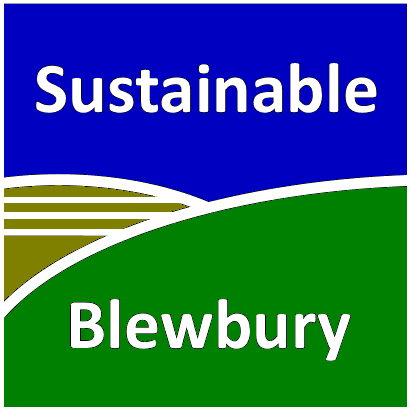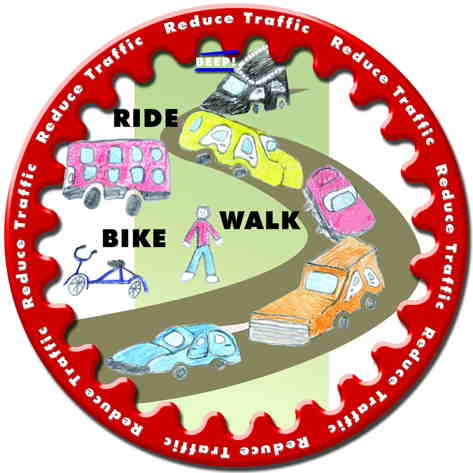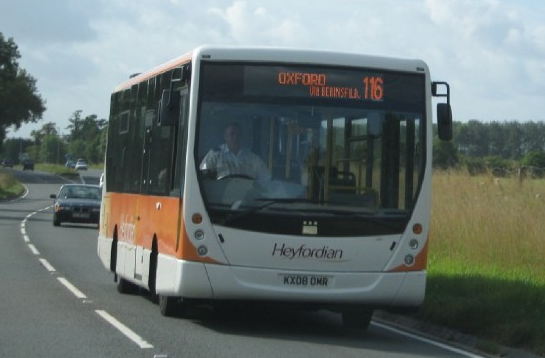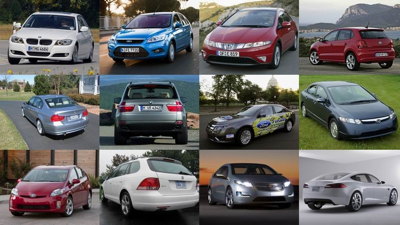
Updated 22 November 2021

|
Updated 22 November 2021 |
|
HOME PAGES GLOBAL WARMING WHAT YOU CAN DO GREEN ISSUES BACKGROUND THE INITIATIVE |
The Blewbury Energy Initiative has investigated how to minimise carbon dioxide emissions when making journeys. We have put together a compilation and evaluation of the emissions from different types of transport, as well as a detailed discussion on choosing a car. There are tips for driving to minimise fuel consumption, and a discussion on the present and future use of alternative road fuels with a separate page on hydrogen and fuel cells. The results are intended to be useful for individuals, and also to provide input to projects supported by the Sustainable Blewbury initiative. This page briefly summarises our recommendations on how to reduce your contribution to CO2 emissions when you travel, then outlines the contents of our other pages on transport. I have lightly edited this page, which was written in 2011, to bring it more up to date for 2021. (Eric Eisenhandler)

Recommendations for Individuals
Recommendations for Blewbury
Comments on public transport Effect of usage on future provision If a bus, train, airliner or cruise ship is already scheduled, the extra energy needed to accommodate another passenger is negligible. Thus, if we ignore any effect of the take-up of seats on the future provision of scheduled services, one should use public transport whenever possible. The decision of one individual to use a particular form of transport will also have a negligible effect on future public-transport schedules. However, if many people make the same choice of transport for environmental reasons, this can lead to more provision of the favoured method of transport and less for those not being used. Long-distance coaches Well-used long distance coaches provide the lowest emissions per passenger. However, there may be some distance to travel to reach the nearest stop – this is a particular consideration in Blewbury, which is close to a main railway station but relatively far from long-distance coach lines. If coach routes are conveniently located, using them is likely to be the best option for environmental reasons. 
Trains Electric trains are far better for emissions than diesels, and if well-used are only a little worse than long-distance coaches for emissions. The trains between Didcot and London are usually crowded, and therefore generate relatively low emissions per passenger. However, for trains in less populous parts of the network the number of passengers drops considerably, and the emissions per passenger can easily exceed those of a car, particularly if the emissions involved in keeping the line open are included. This can lead to an argument for not using services which carry very few passengers. If more people take this option, fewer trains may be scheduled to run or the line may be closed. If the railway service is being subsidised for social reasons, the environmental cost would be reduced if the train was replaced by a bus service. However, the train is often faster and more comfortable, and this might outweigh the environmental argument. Planes The emissions per passenger-mile on a long distance flight are not dramatically larger than that of a train, and there is no need for the maintenance of a terrestrial route, which also causes additional emissions, although the conurbation around the airport should also be considered. However, the dominant point is probably that existence of planes encourages much longer journeys and this is bad for the environment. Thus the main environmental conclusion is for everyone to minimise the distances they travel by plane. One good suggestion is to eliminate domestic flights if there is a train option taking less than perhaps four hours. 
Rural buses Rural buses are provided for social reasons, and for much of their journeys they carry very few passengers. This makes the CO2 generated per passenger mile rather high. However, unless there is an alternative way of achieving the social aims of the service it is sensible to use the bus service whenever possible. Rural taxis Where public transport is not available, and a vehicle is needed, the use of a private car is likely to generate less emissions than the use of a rural taxi, particularly if the car is to be parked at the destination rather than to be returned to its starting point by the driver. The rural taxi is likely to be a large car with relatively high emissions, and typically will travel twice the distance as it returns to base. Conclusions on public transport On these environmental criteria public transport, when well-used, should be favoured in the following order:
However, in many cases environmental considerations will be justifiably overruled by other criteria such as time and convenience – we are not suggesting that you should travel from Blewbury to Edinburgh by coach! More Transport Issues High-speed rail Creating new railway lines in Britain is very energy intensive, and often environmentally damaging thus the effective emissions for the HS2 line from London to Manchester will be higher than the emissions on existing lines. Electrification of the railways Railways become a better environmental option if they are electrified, and much better still if the necessary electricity is generated by renewable resources. Investment in the electrification of the existing main-line railways is better on environmental grounds than investing in new high speed-lines. It is also likely to benefit many more people. Sadly, the runaway budget for our electrifying our nearby main line meant that the links to Oxford and Bristol were not electrified and trains with both electric and diesel power were required. The proposed new line from Oxford to Cambridge has no plans for electrification. Alternative road fuels Hydrogen promises much but there are many difficulties – it now looks like lithium-battery electric cars will take over, but the batteries are far too heavy for smalll, light cars. Fly-drive and holidays by air If the foreign holiday will be taken anyway, and the plane flight is scheduled, the decision to fly – or to use a train – and to hire a car at the nearest airport or station is better for the environment than to drive the whole distance in the family car. If many people drive to their distant holiday destinations there will be fewer flights scheduled, but whether this is beneficial overall depends on the average number of people in the car. Typically a car holding four people generates significantly less CO2 per passenger-mile than the equivalent plane, but a car carrying a single individual would normally generate more. Any use of private transport at either end of the journey, such as going to and from an airport, does involve additional emissions. For example, there are less additional emissions if a journey is from a local train station rather than one involving a drive to a more distant airport. Cruise liners A modern cruise liner carrying up to 2000 passengers may achieve 0.025 mpg, or 40 mpg per passenger if 80% full. Since this is optional travel, the environmental argument would be to limit the use of cruises, leading to less provision and lowering emissions. Other ideas The need to reduce greenhouse gas emissions can produce innovative businesses. An example is a firm (Shiply) that arranges to deliver goods, either personal or commercial, by finding companies already planning to make a similar journey but having spare capacity or running empty in one direction. This is both greener and less expensive. The transport emissions page attempts to estimate typical emissions from a wide variety of different forms of transport. It includes:
The choosing a car page discusses how green issues would affect a car purchase. It covers some general issues: 
The rest of the page expands on this summary and discusses what sorts of cars have recently been introduced or are coming soon, with emphasis on new types of hybrids (plug-in and diesel) and the fully electric models that have started to appear. Some specific examples are discussed. There is a reference table at the end giving annual road tax rates and how they depend on emissions. The driving tips page describes how to get the best fuel consumption from any car. The alternative road fuels page discusses the possible role now and in the future for alternative fuels, including:
Hydrogen and fuel cells are a special case, discussed in detail on a separate page. |
 |
If you have any comments or queries about this website please contact the
webmaster. |
© Blewbury Energy Initiative 2021 |